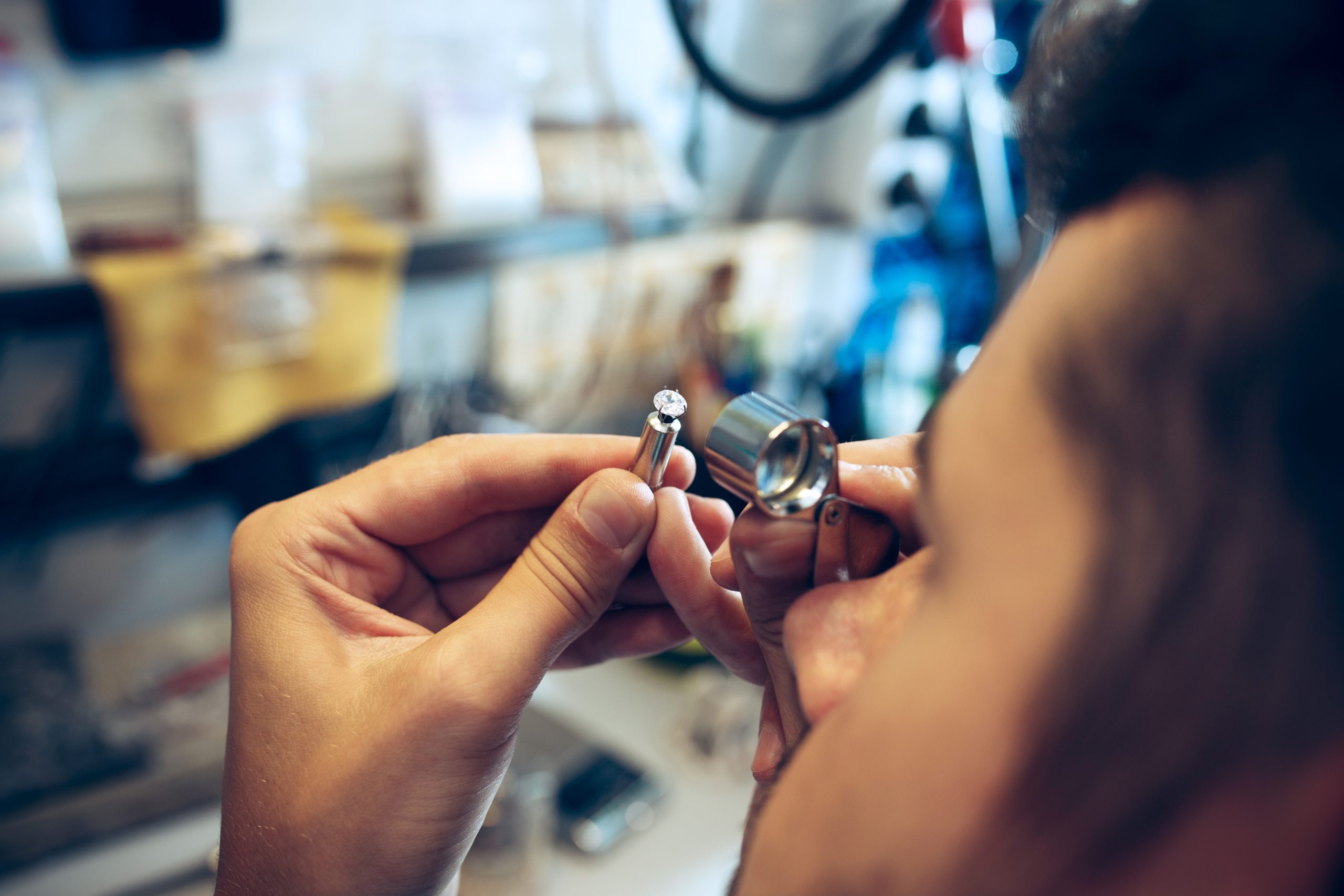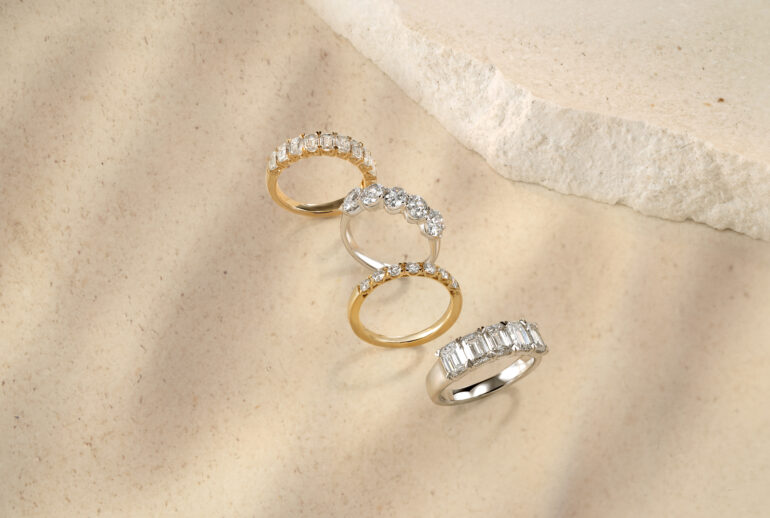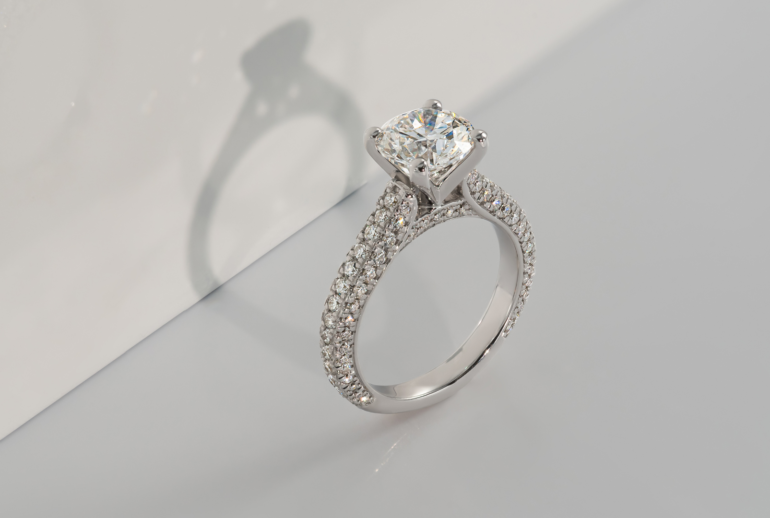Let’s talk about lab-grown diamonds – you know, those sparkly beauties cooked up in a science lab instead of being dug out from the deep, dark corners of Mother Earth. Guess what? These guys actually test as real! Yes, you heard it right. Thanks to their carbon structure being nearly identical to their earth-dug cousins, they assume their role with remarkable authenticity.
In recent years, these lab-created wonders have really stolen the limelight, taking center stage as the stars of engagement rings and wedding bands. Just to give you a hint of how big this trend is, Allied Market Research popped out some numbers – the market for lab-grown diamonds hit a cool $22.3 billion back in 2021 and is predicted to more than double, reaching a staggering $55.6 billion by 2031. It’s all down to better production techniques and a growing number of folks saying “yes” to these alternative sparklers.
Cracking the Code: How Lab-Grown Diamonds Come to Life
How exactly does one whip up a diamond in the lab? Well, it’s all about mimicking the natural process that happens deep within the earth, and scientists have two primary ways of doing this: High Pressure High Temperature (HPHT) and Chemical Vapor Deposition (CVD).
First up is the HPHT process, which sounds like something straight out of a superhero comic. Picture this: a tiny diamond seed gets tucked into a bed of carbon. It’s then blasted with temperatures between 1,500 and 1,600 degrees Celsius and squeezed under pressures of at least 870,000 pounds per square inch (no, we’re not kidding). This fiery ordeal causes the carbon to melt and envelope the seed, and voila, a diamond is born. The next step is just a cool-down, and you’ve got yourself a pure carbon diamond.
If you’re not a fan of extreme heat and pressure, you might like the CVD method better. Here, a diamond seed is placed in a sealed chamber that’s then filled with a carbon-rich gas (methane, anyone?). The chamber is heated up, but it’s a little less intense – just between 900-1,200 degrees Celsius. The heat breaks down the gas molecules, setting free carbon atoms that can’t wait to latch onto the diamond seed and crystallize. Layer by layer, these atoms build up, and over time, a diamond emerges. Isn’t science amazing?
Your Friendly Guide to Diamond Authenticity Checks
Whether lab grown diamonds are born from HPHT or CVD, these man-made sparklers are every bit as real, at least when it comes to their physical, chemical, and optical properties. That means they share the same rock-hard hardness, same refractive index, and the same shimmering dispersion characteristics. But how do you tell them apart?
In the diamond world, there are a few trusty tests that have been used for years to spot a real diamond. These tests are all about checking the diamond’s hardness, how well it conducts heat, its refractive index, and its specific gravity.
- Take the thermal conductivity tester. Diamonds have this cool trait of dispersing heat super-fast, unlike many of their fellow gemstones. This gadget measures the rate heat zooms through a stone, and if it matches the diamond’s speed. You’ve got a diamond.
- Another handy tool is the loupe – a souped-up magnifying glass that jewelers love to use. A good look-see with a loupe can reveal tiny inclusions that are usually found in natural diamonds.
- And then we have the refractometer, a real gemologist’s best friend. This device measures the diamond’s refractive index, or how much it bends light entering the stone. Diamonds are known for their high refractive index, which gives them that signature sparkle.
But here’s the twist: these traditional tests aren’t quite up to the task of telling natural and lab-grown diamonds apart. That’s because lab-grown diamonds share the same thermal conductivity, refractive index, and hardness as mined diamonds. This conundrum has led to the invention of smarter testing methods.
Stepping Up the Game with Advanced Testing Techniques
Today’s savvy diamond detectives have some nifty high-tech tools at their disposal. These machines can spot the unique growth patterns and specific inclusions that mark the difference between natural and lab-grown diamonds. For example, HPHT diamonds can sometimes show off metallic inclusions not typically seen in natural diamonds, while CVD diamonds might bear tiny grooves or channels as tell-tale signs of their lab-grown beginnings.
- One of these high-tech methods is infrared spectroscopy, which checks how diamonds, whether natural or lab-grown, absorb infrared light. It does this by shining an infrared light on the diamond and analyzing the reflected light. The tiny differences, caused by minute impurities and structural variations during formation, can be spotted with this technique.
- Another neat trick is laser inscription. A super-fine laser is used to engrave a microscopic identifier (like a report number, logo, or unique marker) on the diamond’s edge. This doesn’t mess with the diamond’s quality and is invisible to the naked eye, but it can be seen with a 10x magnification loupe or microscope.
- Then we have photoluminescence spectroscopy, another gem from the world of gemological labs. This process zaps the diamond with high-energy light, causing it to emit light at different wavelengths. The light that is emitted can be analyzed to reveal specific atomic structures and defects, which can tell if the diamond is natural or lab-grown.
- Lastly, we have the DiamondView instrument, a brilliant invention by De Beers. This gizmo uses short-wave ultraviolet radiation to expose the growth structures that differ between natural and synthetic diamonds. The machine creates a snapshot of the diamond’s structure, which can be examined to figure out
Certifications: The Seal of Authenticity
Now, despite all the fancy tech and sophisticated tests, nothing can replace good old professional expertise. You see, deciphering these results and grasping the nuances of natural and lab-grown diamonds calls for deep training and solid experience.
Enter the diamond certifications, our unsung heroes that offer much-needed transparency and a confidence boost to you, the consumer. These certificates serve up a pro-grade, third-party analysis of a diamond’s key traits, including its cut, color, clarity, and carat weight – lovingly known as the Four Cs. Plus, when it comes to lab-created diamonds, these certs also verify the diamond’s lab-born origin.
Some of the big players in the diamond grading game include the Gemological Institute of America (GIA), the American Gem Society (AGS), the International Gemological Institute (IGI), and the European Gemological Laboratory (EGL). Each has their own way of doing things, their own grading methods and standards. But at the heart of it all, they usually assess diamonds based on the Four Cs and might also include extra info on symmetry, fluorescence, and more.
Our lab-grown diamonds go through the same rigorous grading process as natural ones. They’re rated based on the Four Cs and can also get additional grades on polish and symmetry. Lab-grown diamond certificates also clearly state their lab-grown roots. This transparency is key to keeping the diamond market fair and square, making sure that you know exactly what you’re buying.
Your Go-to Place for Top-Notch Lab-Grown Diamonds: Grown Brilliance
Fancy a piece of this shiny, sustainable future? Say hello to Grown Brilliance, your trusted source for premium lab-grown diamonds. Driven by our dedication to innovation and sustainability, we bring you stunning jewelry pieces, from solo engagement rings to dazzling necklaces, all bedecked with ethically crafted diamonds that are visually identical to their mined kin.
Come, explore our stunning jewelry collection, from wedding and engagement pieces to loose diamonds, or just hit us up to find your dream diamond. Embrace the future of responsible luxury with Grown Brilliance.



